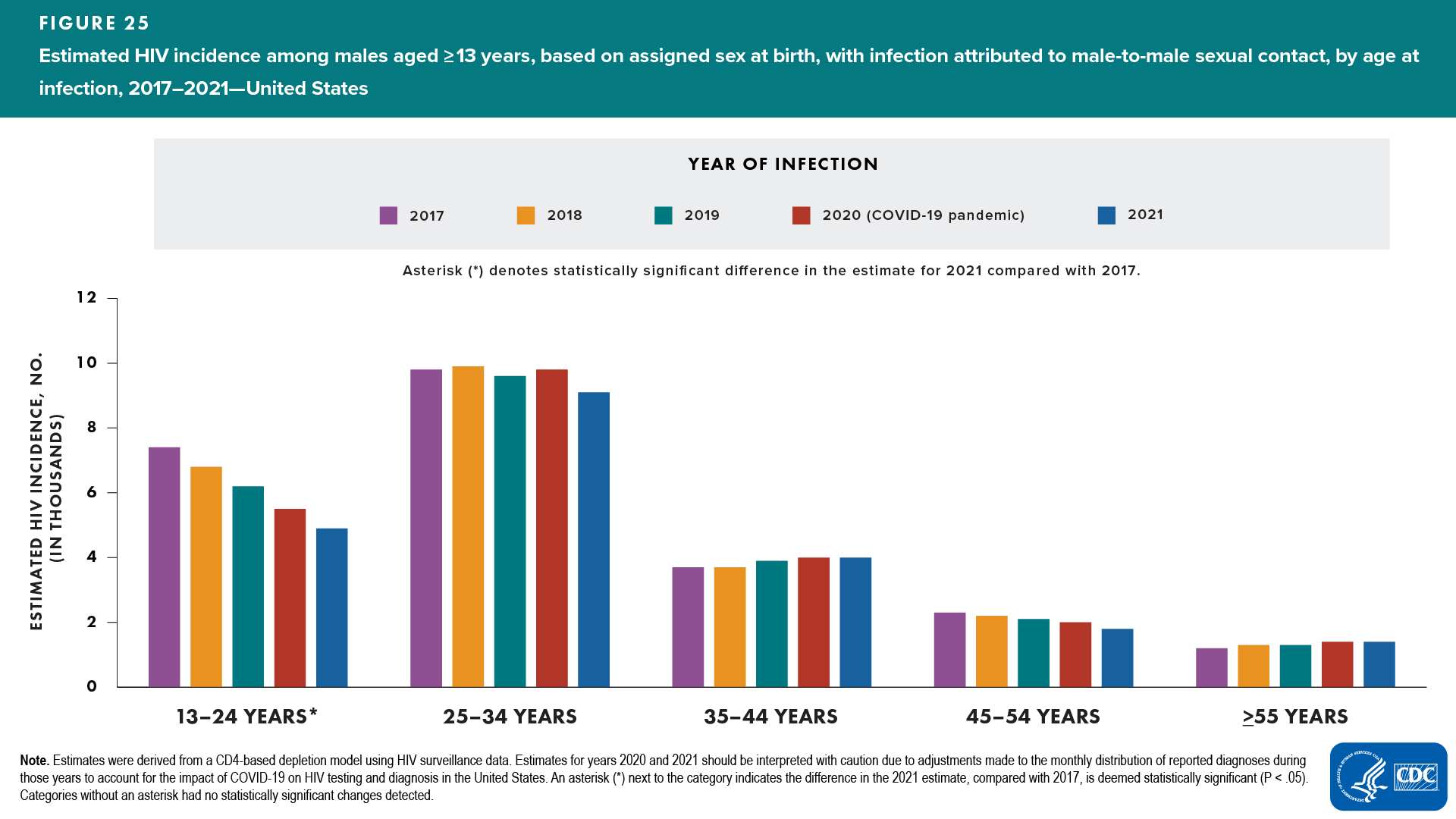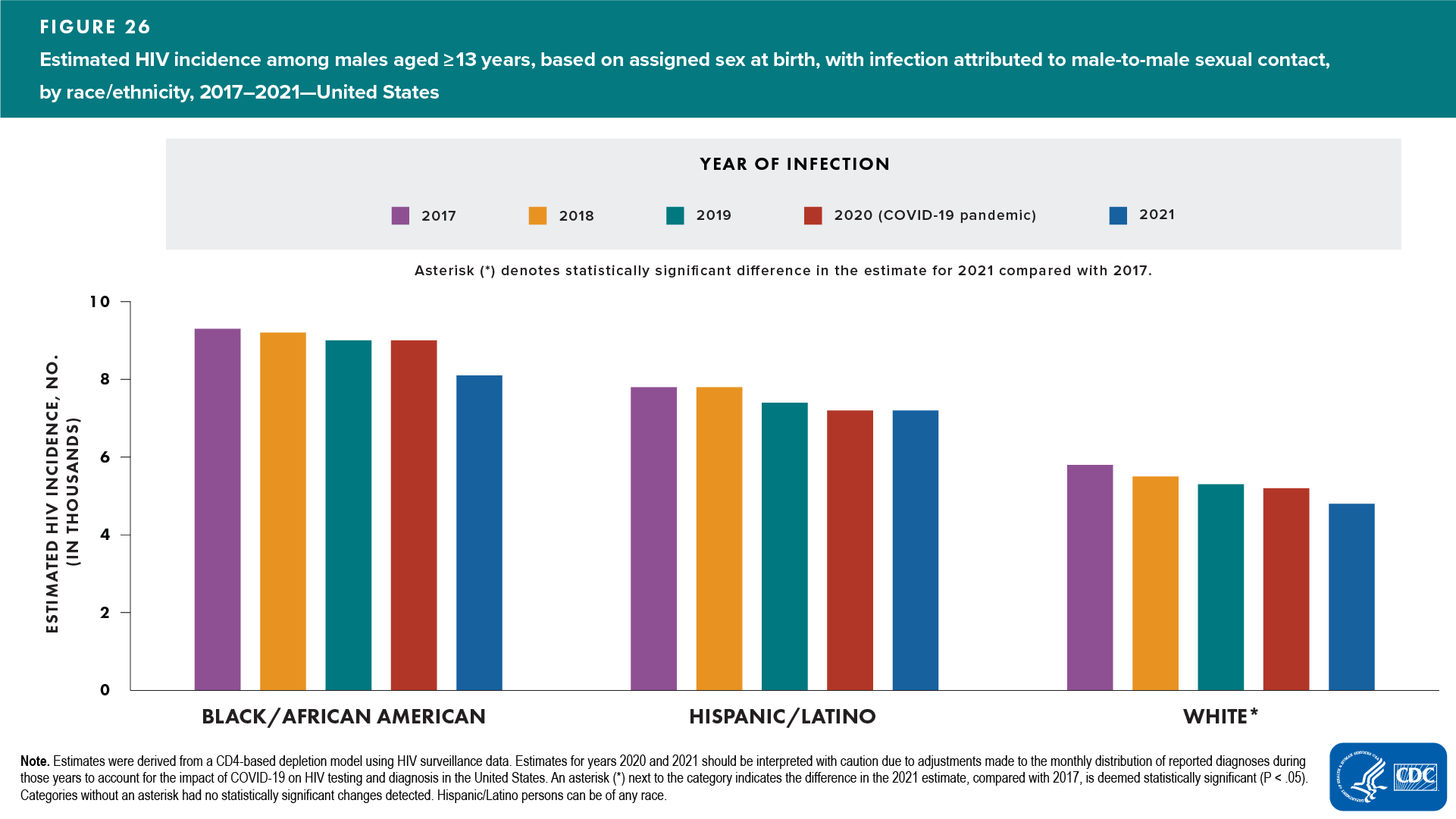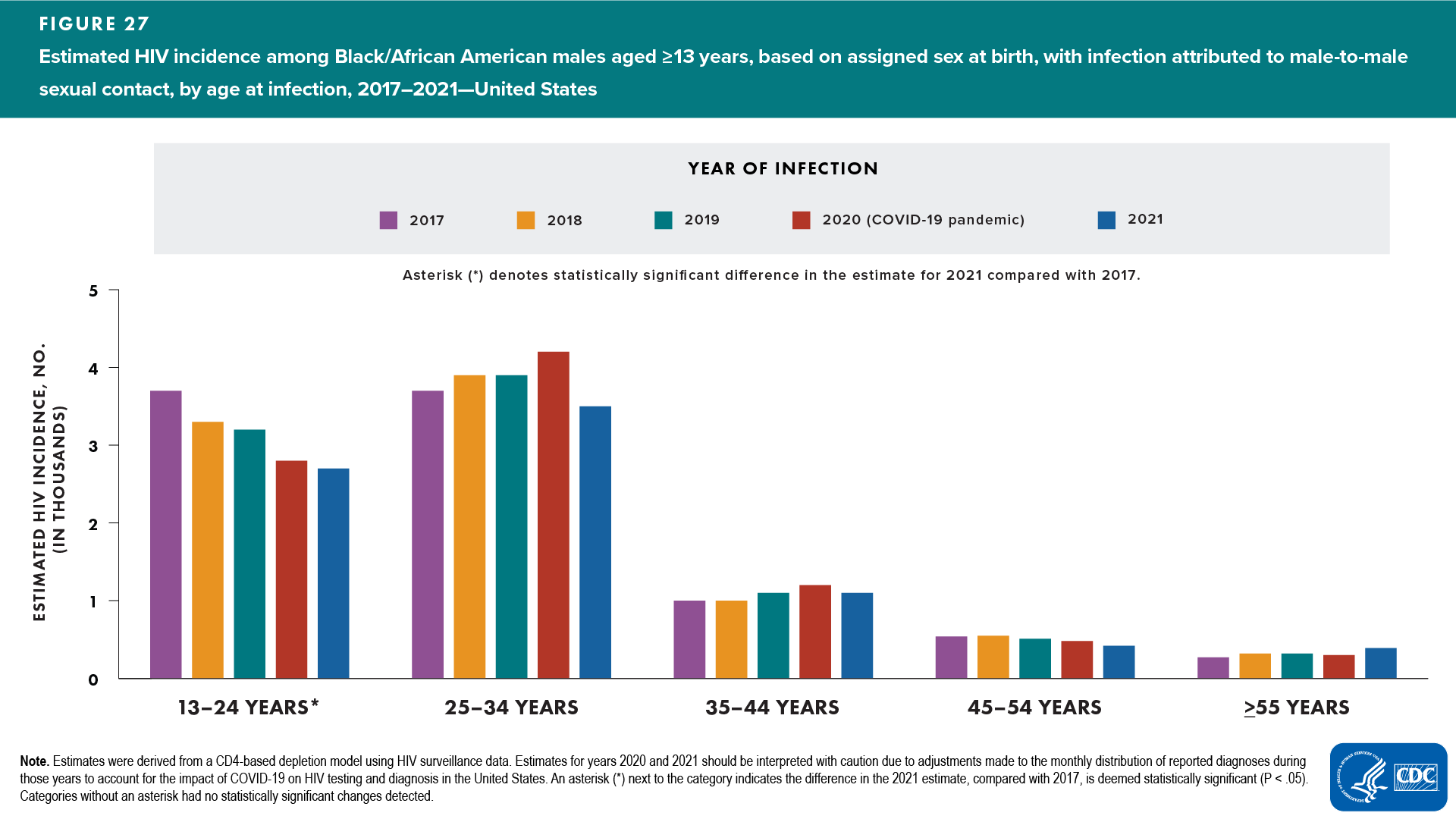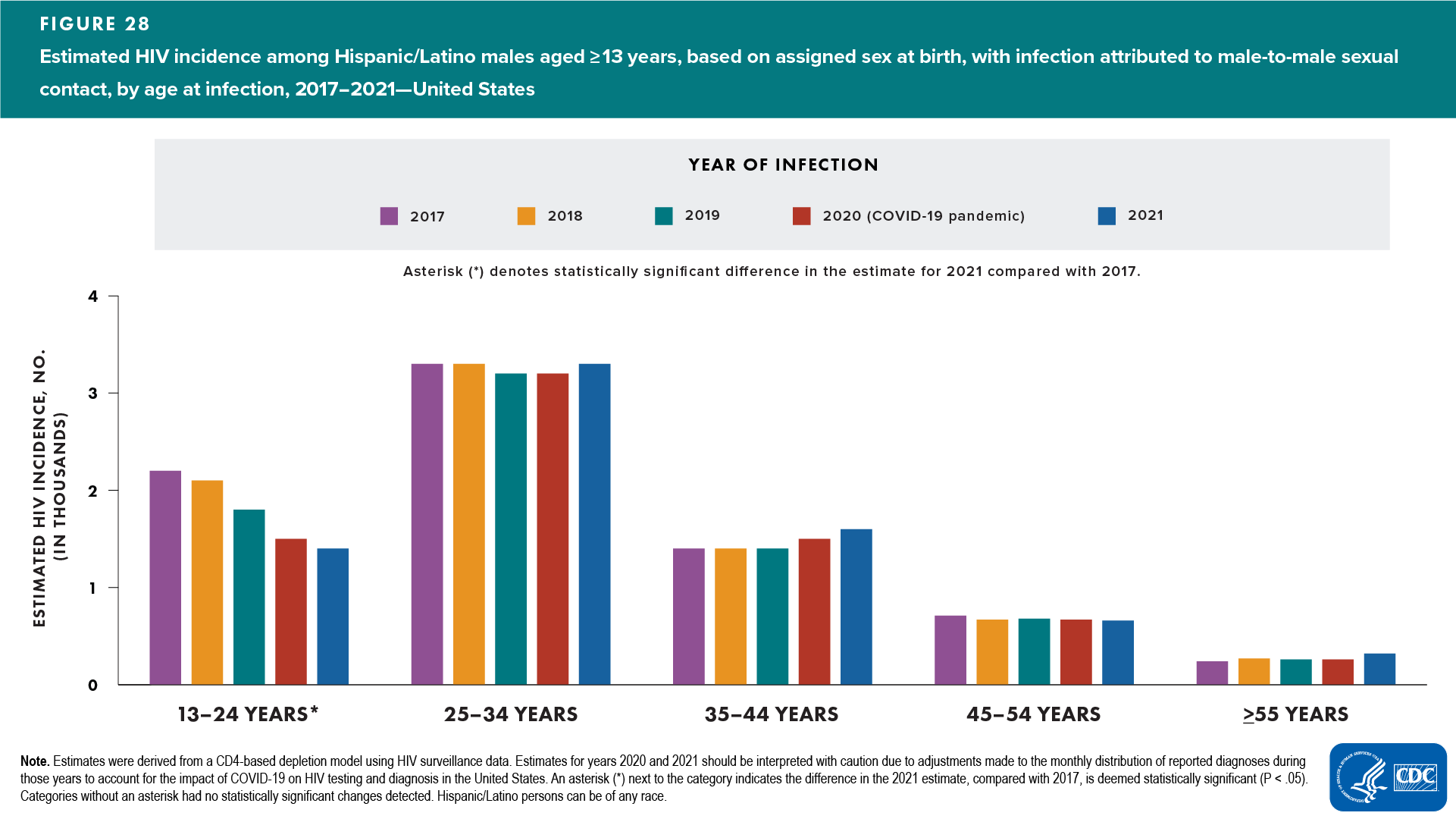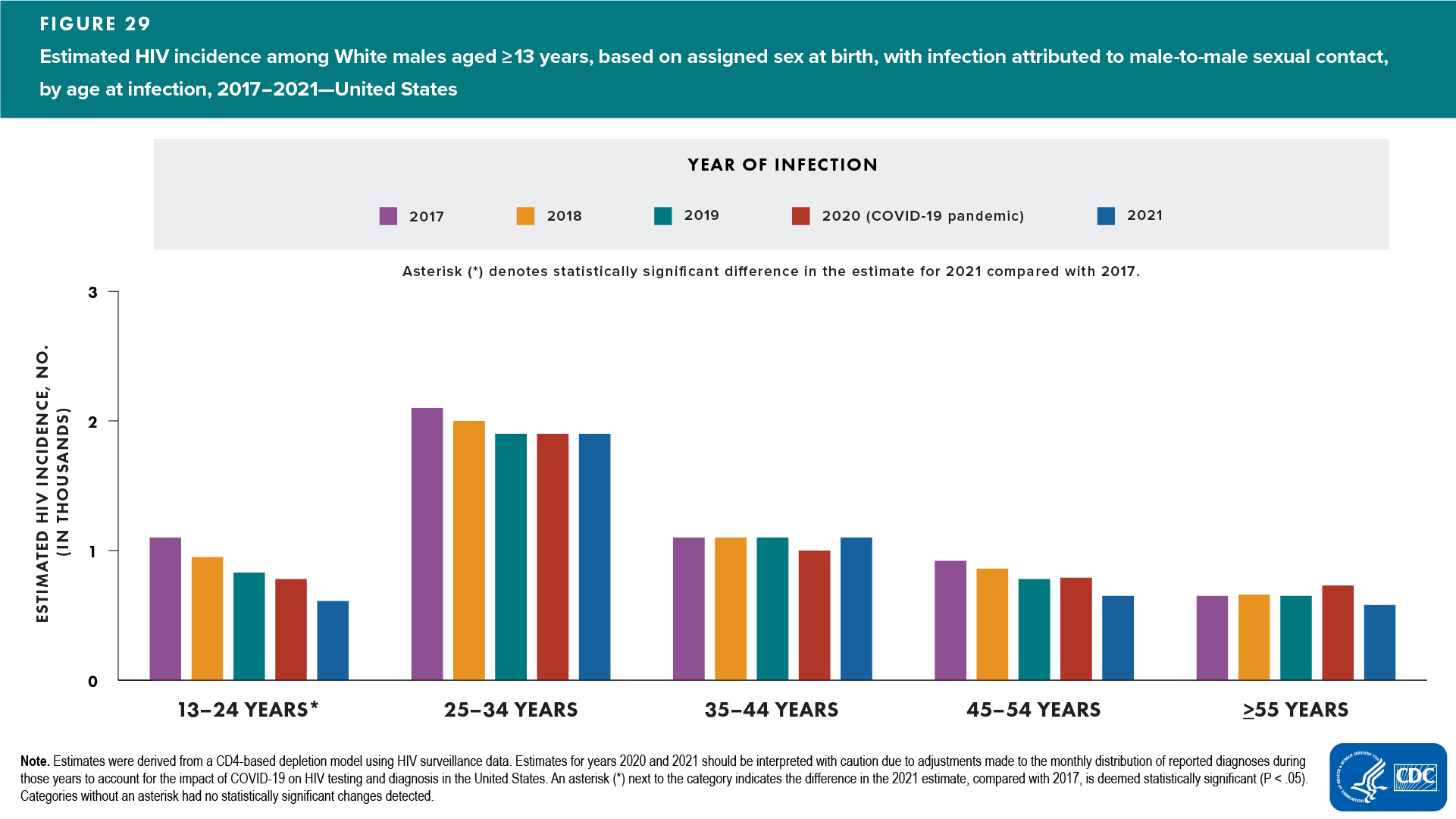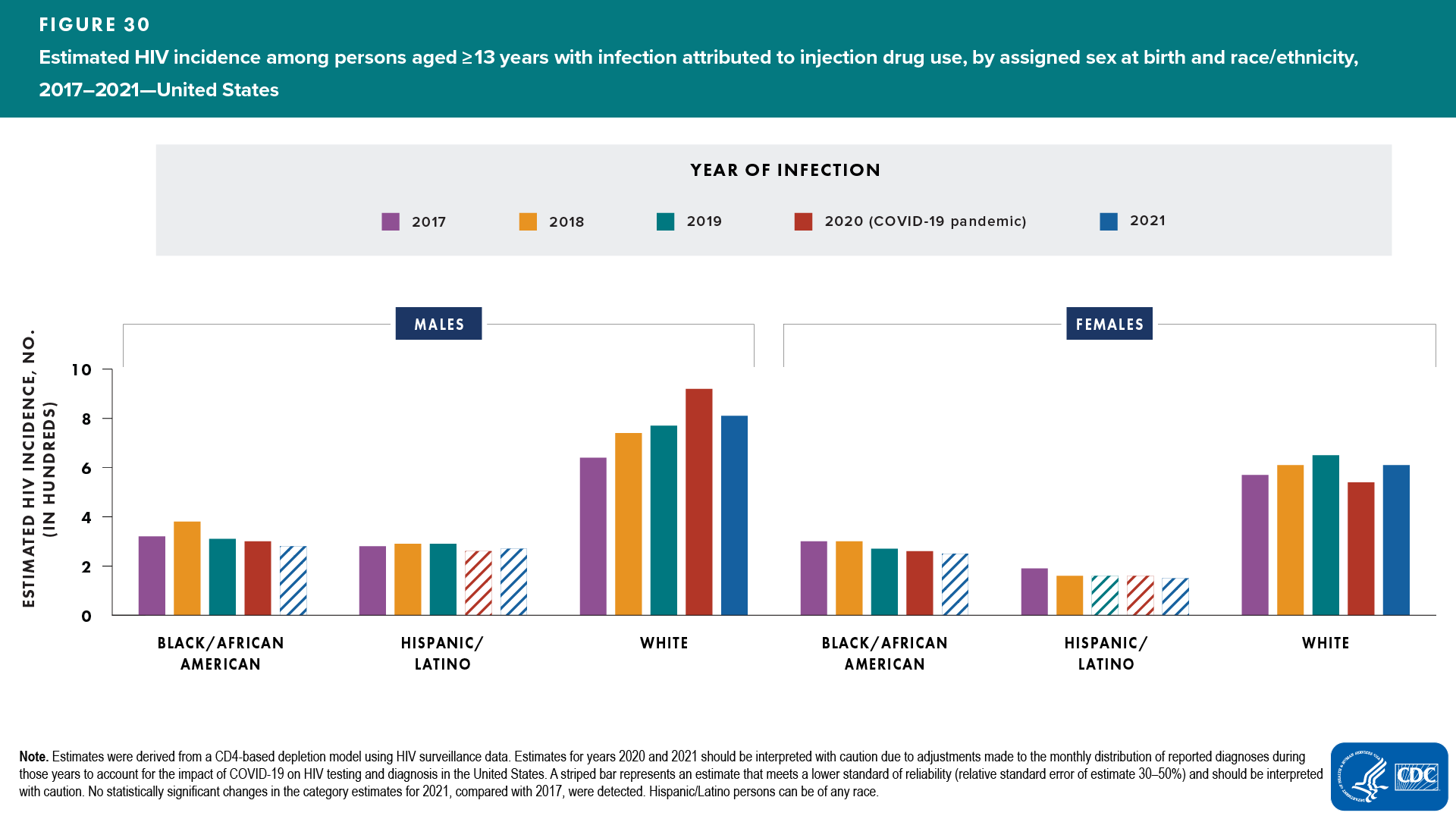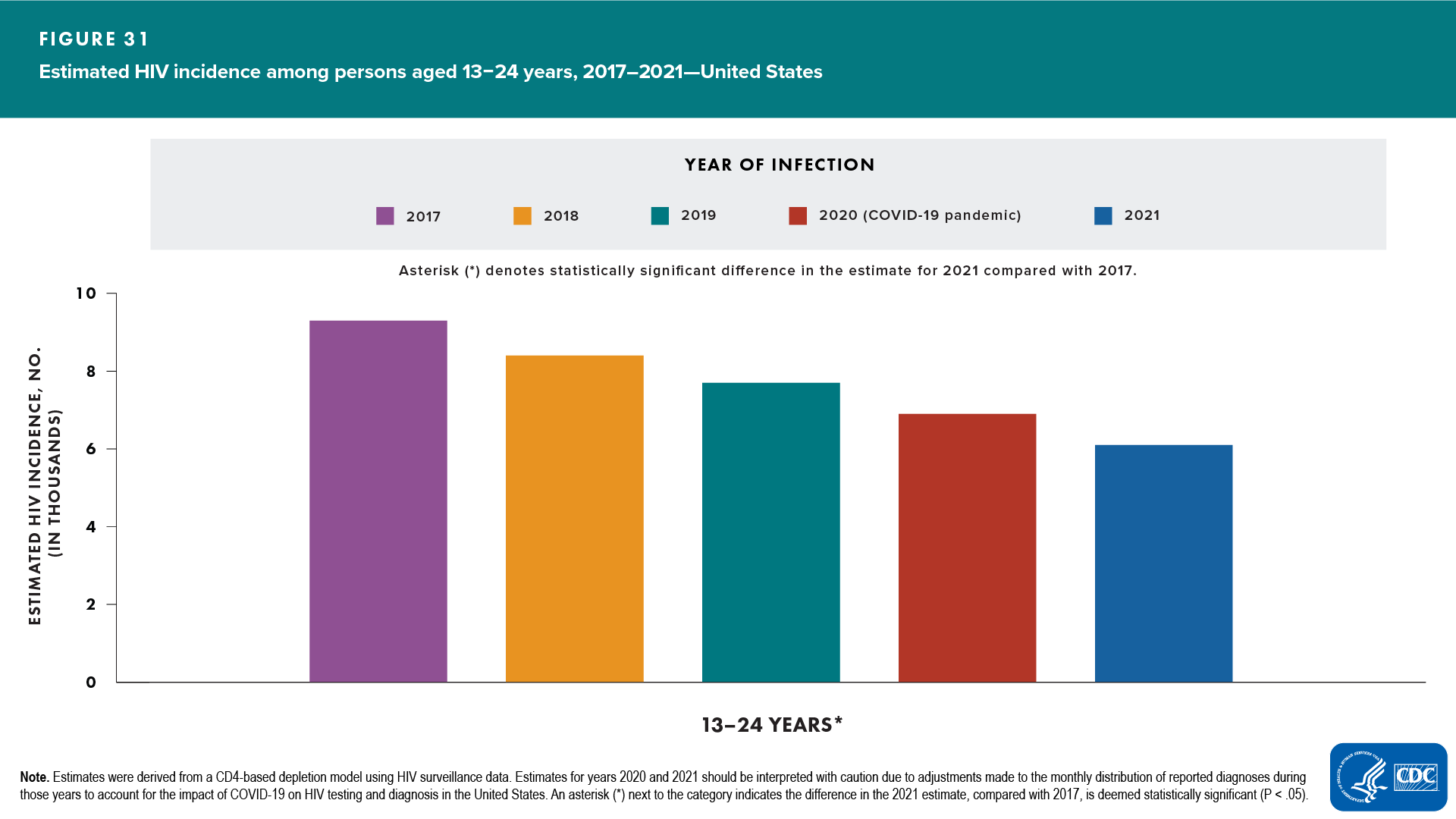Estimated HIV Incidence and Prevalence in the United States, 2017–2021: Special Focus Profiles

The Special Focus Profiles highlight the estimated distribution of HIV in populations of particular interest to HIV prevention programs in state and local health departments: (1) Gay, Bisexual, and Other Men who Have Sex with Men, (2) Persons who Inject Drugs, and (3) Persons Aged 13–24 Years. See suggested readings for references and additional information including HIV risk behaviors, barriers to care, and prevention challenges for each population of particular interest.
Gay, Bisexual, and Other Men Who Have Sex With Men
Gay, bisexual, and other men who have sex with men (MSM) are the population most affected by HIV in the United States. Stigma, homophobia, and discrimination make MSM of all races/ethnicities susceptible to multiple physical and mental health problems and can affect whether they seek and receive high-quality health services, including HIV testing, treatment, and other prevention services.
In 2021, MSM (based on ASAB) accounted for 64% (716,900 MMSC and 62,900 MMSC and IDU) of the 1,212,400 estimated persons living with HIV in the United States (Table 8). Many Black/African American and Hispanic/Latino MSM with HIV, particularly young MSM, are unaware of their HIV infection. Lack of awareness of HIV status among young MSM (aged 13–24 years) may be due to recent infection, not getting tested due to underestimation of personal risk, or fewer opportunities to get tested. Persons who do not know they have HIV do not get medical care or receive treatment and can unknowingly infect others.
HIV Incidence among MSM
In 2021, HIV incidence among males, based on ASAB, with infection attributed to MMSC, was as follows:
- Decreased overall when compared with 2017 (Figure 8)
- Age at infection—decreased: aged 13–24 years; no change detected: all other age groups (Figure 25 and Table 5)
HIV Incidence among MSM, by Race/Ethnicity and Age Group
Black/African American males (based on ASAB)
In 2021, HIV incidence among Black/African American males with infection attributed to MMSC was as follows:
- No change detected when compared with 2017 (Figure 26 and Table 5)
- Age at infection—decreased: aged 13–24 years; no change detected: all other age groups (Figure 27 and Table 5)
- The largest percentage (43%) was among young Black/African American males aged 25–34 years (43%) (Table 2)
- Accounted for 55% of infections among MMSC aged 13–24 years (Table 5)
Hispanic/Latino males (based on ASAB)
In 2021, HIV incidence among Hispanic/Latino males with infection attributed to MMSC was as follows:
- No change detected when compared with 2017 (Figure 26)
- Age at infection—decreased: aged 13–24 years; no change detected: all other age groups (Figure 28 and Table 5)
White males (based on ASAB)
In 2021, HIV incidence among White males with infection attributed to MMSC was as follows:
- Decreased when compared with 2017 (Figure 26)
- Age at infection—decreased: aged 13–24; no change detected: all other age groups (Figure 29 and Table 5)
HIV Prevalence among MSM
At year end-2021, an estimated 716,900 MSM were living with diagnosed or undiagnosed HIV infection in the United States (of whom 85.8% were living with diagnosed HIV), accounting for 59% of all persons living with HIV (Table 8).
Among MSM living with HIV at year-end 2021, percentages were (Table 12):
- Black/African American—32%
- Hispanic/Latino—27%
- White—34%
- Other—7%
Persons Who Inject Drugs
Persons who inject drugs (PWID) can get HIV if they use and share needles, syringes, or other drug injection equipment (e.g., cookers) that someone with HIV has used. In recent years, the opioid (including prescription and synthetic opioids) and heroin crisis has led to increased numbers of PWID. HIV diagnoses among PWID have increased in the 50 states and District of Columbia. IDU in nonurban areas has created prevention challenges and brought attention to populations who would benefit from HIV prevention efforts.
Among PWID aged ≥13, no changes were detected in the estimated annual number of HIV infections in 2021, compared with 2017. Additional numbers were as follows:
ASAB (Table 1)
- Increased—none
- Decreased—none
- No change detected—both sexes
Race/Ethnicity
- Increased—none
- Decreased—none
- No change detected—Black/African American, Hispanic/Latino, and White persons
At year end-2021, an estimated 121,900 PWID were living with HIV (of whom 92.2% were living with diagnosed HIV) and accounted for 10% of all persons living with HIV (Table 8).
Persons Aged 13–24 Years
Persons aged 13–24 years accounted for 19% of the 32,100 estimated new HIV infections in 2021 in the United States. They are the least likely of any age group to be aware of their HIV infection. Lack of awareness of HIV status may be due to recent infection or low rates of HIV testing. Persons who do not know that they have HIV do not get medical care or receive treatment and can unknowingly infect others. In addition, persons aged 13–24 years have high rates of STDs and low rates of condom use, greatly increasing the chance of getting or transmitting HIV. Addressing HIV among persons aged 13–24 years requires that they have access to the information and tools they need to make healthy decisions, reduce their risk factors, obtain treatment, and stay in care.
The annual number of HIV infections in 2021, compared with 2017, decreased among persons aged 13–24 years overall and among MSM of the age group overall, and Black/African American, Hispanic/Latino, and White MSM (Tables 1 and 5) (Figures 29 and 31).
Among persons aged 13–24 years, the estimated annual number of HIV infections decreased in 2021, compared with 2017. Additional numbers were as follows:
Race/Ethnicity (Tables 2, 3, and 4)
- Increased—none
- Decreased—Black/African American males, Hispanic/Latino males, and White males
- No change detected—Black/African American females, Hispanic/Latino females, and White females
MSM (Table 5)
- Increased—none
- Decreased—overall, Black/African American, Hispanic/Latino, and White persons
- No change detected—none
At year end-2021, an estimated 41,900 persons aged 13–24 years were living with HIV infection (Table 8).
- Prevalence rate—80.7
- Percentage living with diagnosed HIV infection in 2021: 56.4%
